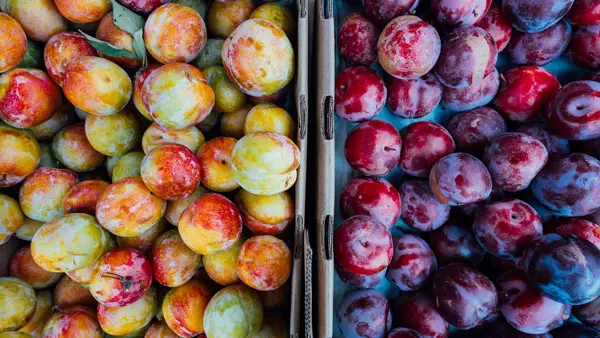Winter Moths are common in the UK and are most frequent between Autumn and Winter. They are one of the few moth varieties that can handle the harsh winter weather. Female moths lay their eggs in several varieties of fruit trees and hedgerows, and the caterpillars emerge in the Spring. The caterpillars fall to the ground in June, ready to pupate. These moths are beige and the females are easy to distinguish due to their almost complete lack of wings.

Eggs are laid either on branches or in the bark itself and the tiny caterpillars then feed on the developing flower buds on trees. Fruit tree hosts include apples and cherries and they are attracted to the blossom and flowers. They also feed on sycamores, hawthorns, and roses where they can be tolerated due to being ornamental and not yielding fruit. Winter Moth Caterpillars will create holes in the leaves which will often be the first sign of infestation.
Jump To...
Fruit Trees Vulnerable to Winter Moths
There are different species of winter moths and they all feed on the flowering buds of fruit trees and the fruits themselves.
Fruit trees vulnerable to winter moths include:-
Other trees vulnerable to winter moths include:
- Sycamore trees
- Rose bushes
- Sorbus trees
- Oak trees
- Hawthorn trees
Winter Moth Identification – Lifecycle
With winter moths, it’s the caterpillar stage of the lifecycle whereby damage is carried out so let’s look at the lifecycle of the winter moth. This will help you identify an infestation if you suspect these pests being present in your fruit tree.
To help with identification, here’s what you should look out for during the growing season, and when you should be looking out for those telltale signs of an infestation.
Spring
In spring, winter moth eggs hatch and tiny green caterpillars emerge. These caterpillars are relied upon by some bird species to feed their clutches. If you encourage birdlife to your garden they will assist with natural control of the pest population.
Summer
Larvae drop to the ground ready to begin the pupation process.
Autumn And Winter
Eggs are laid in fruit trees in late autumn and through winter by the adult moths, usually in clutches of around 30. Winter moths are hardy and have evolved to thrive during the winter. Females crawl up trees and wait for a mate. Winter moths are a term attributed to several moth species that are most active during the cold season.
Winter Moths Treatment & Control
There are effective ways of treating and controlling winter moths. Often, they don’t cause extensive damage but if you are unlucky with a large infestation it can affect your fruit crop. The problem can be made worse by windy conditions which cause the caterpillars to be blown to many different trees and bushes.
Winter Moth Caterpillar Damage – What to Look For
The first signs you are likely to see of winter moth damage is during the spring and summer where you might notice holes in the foliage as the young Winter Moth Caterpillars feed on leaves. Developing fruitlets may also have small holes in and some fruit may drop early as a result of damage.
Control Methods
Small infestations can be controlled using non-harmful treatments which won’t impact other species of wildlife. Larger infestations may need more aggressive treatment to stop the fruit yield being irreversibly affected.
Chemical Free Control of Winter Moths
You don’t always need to use chemicals to deal with a winter moth problem. Here’s a few chemical free choices you have for dealing with winter moths.
- Where possible simply leave them be – if you have winter moths then you have a really thriving garden ecosystem.
- Birds are your friend. Some bird species rely heavily on the emergence of the caterpillars. They time their brood to coincide with the caterpillars emerging and can feed their clutch over 100 caterpillars in just one day. Why not pop up some bird nesting boxes in and around your garden?
- Grease bands can be stuck to the base of your tree trunk. Females can’t fly so as they crawl up ready to mate they become stuck and will die. Be sure you purchase ones only suitable for capturing moths so bats or birds aren’t at risk also.
- Turn over the soil around the tree regularly to disturb any larvae burrowing. You can also cover the surrounding base of the tree with a sheet of plastic or similar to stop the larvae from burrowing in the soil next to the tree.
Winter Moth Pesticide Control
Pesticide control might be needed if there is a heavy infestation or it’s a young tree still trying to establish itself. Here are a few control suggestions using common fruit pesticides.
- You can spray your tree with a pesticide just as the eggs are hatching in the spring. It’s not great to spray any trees with blossom and flowers already present because you will also be killing important pollinators.
- When you spray the tree you will likely also kill aphids which will again limit any damage.
- Deltamethrin and pyrethrum are chemicals you should look for when purchasing a pesticide so check the ingredients before purchasing.
- Fruit will need thorough washing before consumption where pesticides have been used.
Our guide to plum pests and diseases will help you identify and avoid common plum tree problems, and provide treatment information.

